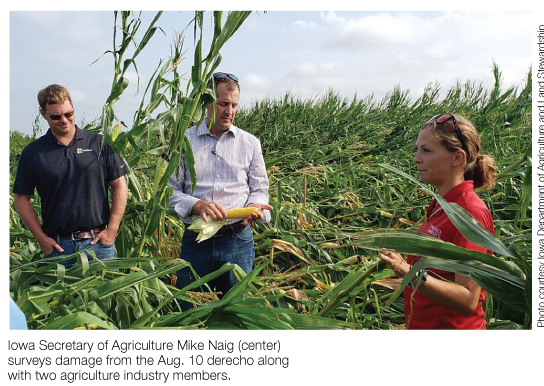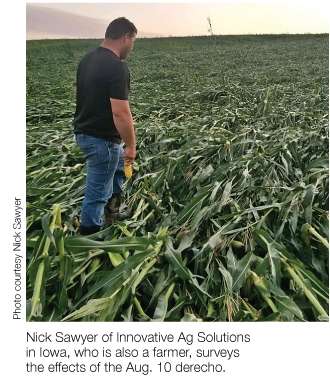Monday, September 14, 2020
 (September 14, 2020) — As winter approaches and supply appears to be tightening, retail marketers have been concerned about the level of propane demand for grain drying. Recently BPN caught up with Michael Newland, director of agriculture business development at the Propane Education & Research Council (PERC), for a discussion of crop drying prospects and an update on other PERC agriculture initiatives.
(September 14, 2020) — As winter approaches and supply appears to be tightening, retail marketers have been concerned about the level of propane demand for grain drying. Recently BPN caught up with Michael Newland, director of agriculture business development at the Propane Education & Research Council (PERC), for a discussion of crop drying prospects and an update on other PERC agriculture initiatives. “This appears to be setting up to be a normal dryer season,” Newland said. “From Indiana back to the Dakotas, the corn belt is at average corn moisture. Earlier planting and average to dryer-than-average moisture indicates this will not be a high demand dryer season for propane.”
The only caveat as we spoke was fallout from the devastating derecho with 100 mph winds on Aug. 10 in Iowa, Nebraska, Illinois, and southern Wisconsin. “There was a lot of damage to the corn crop,” Newland pointed out. “The key question is how many stalks were broken and not just pushed over. If the crop had a lot of damaged stalks, air flow will be hampered and more drying will be needed. The crops that were just pushed over will probably rebound just fine. It may be several weeks before we have a good feel about the damage across several states and how it may impact dryer demand.” Newland is working with University Extension workers who will help assess the damage and impact on propane demand.

NEW PERC TOOLS FOR ESTIMATING DRYER DEMAND
“After a heavy 2019 dryer season caused supply strains in Iowa and surrounding states, PERC created a tool for farmers to help them estimate their propane needs for drying,” Newland said. “The tool is a calculator at propane.com that asks users to input corn acres, expected yield, and points of moisture desired to take out. While not designed to be a calculation of propane needs to the gallon, it can be a great help with planning.”
“Another new tool is designed for internal use by propane state execs,” Newland said. “It tracks planting dates, moisture of rainfall, and minimum-maximum temperatures for days.” This tool requires a code as it is not available to those outside of the propane industry due to a contractual agreement between the vendor and PERC. “The program includes 19 years of historical data by crop district and a tutorial is provided. Once people start using these new tools, they use them a lot.”
OTHER PERC AG INITIATIVES
“New uses in agriculture for propane to help cut emissions in California are notable,” Newland said. “Propane could be a potentially big player in soil steaming, a process that kills weeds, bacteria, fungi, and viruses and is less intrusive and better for air quality than using soil fumigants.” He added that more propane irrigation engines are being used as well as propane-fueled weed flaming technology. “Innovative heat treatment processes also represent another opportunity for propane. The process of thermaculture, which blows high-temperature heat into the crop canopy to control fungus and insects, started in the vinyards in California but is now also being used on row crops of vegetables. Studies have shown thermaculture to be a non-chemical approach that is just as effective but much less costly than using pesticides.” — Pat Thornton




